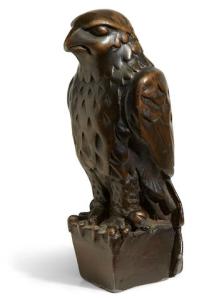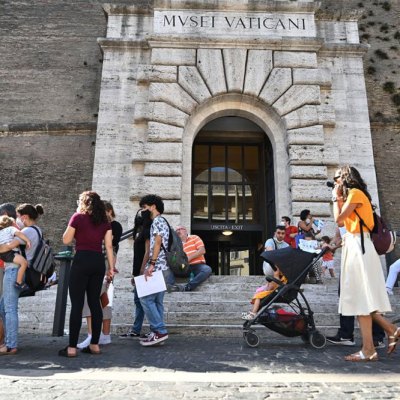Introducing Rakewell, Apollo’s wandering eye on the art world. Look out for regular posts taking a rakish perspective on art and museum stories.
The Maltese Falcon is currently showing in cinemas in the UK and Rakewell couldn’t be happier. If there was a film to get your roving correspondent back into a cinema for the first time since March 2020, this could be it. But while we are looking forward to seeing Humphrey Bogart in a fedora and being given the runaround by Mary Astor, Sydney Greenstreet and Peter Lorre, we can’t help wondering about the ‘real’ Maltese Falcon, or falcons, as the case may be.
In both the original book by Dashiell Hammett and John Huston’s faithful film adaptation, the Maltese Falcon is famously a ‘MacGuffin’. Although everyone is after the statuette, at the end of the story its whereabouts are still unknown – not that anyone really cares; our anti-hero manages to clear himself and that’s what really matters. One of the standout scenes in the film involves Sydney Greenstreet’s amiable villain (Gutman) explaining the falcon’s provenance to Bogart’s private eye (Sam Spade). It’s a gripping account of an Algerian buccaneer, a Greek art dealer and a Russian general, among other players – but Gutman is spinning out his story so that the drug he has slipped into Spade’s drink will take effect, so who knows if it’s really true. (Let this be a warning to anyone on the receiving end of too mesmerising an account of an object’s origins.)
Lead statuette of the Maltese Falcon from the film of the same name, sold at Bonhams in November 2013 for $4m. Courtesy Bonhams

In the film, the falcon – made in 1539 as a gift from the Knights Templar of Malta to Charles V – is really made of gold and is encrusted with jewels, but has been covered in black enamel to disguise its value. It’s the black, enamelled version that we see in the opening credits and later on. In November 2013, Bonhams in New York sold a lead statuette of the Maltese Falcon for the staggering sum of $4million. The lot note describes it – in CAPS – as ‘the only statuette confirmed by Warner Bros. Archives as having appeared on the screen’ and alludes to, but doesn’t quite get into, the existence of other rival claimants.
Several statuettes were meant to have been used on set – three of plaster and one of lead – but the authentication of the plaster versions that have emerged over the years has been complicated by the fact that plaster copies were later made for The Black Bird (1975), a spoof sequel to The Maltese Falcon. The confusion seems completely fitting.
Got a story for Rakewell? Get in touch at rakewell@apollomag.com or via @Rakewelltweets.




